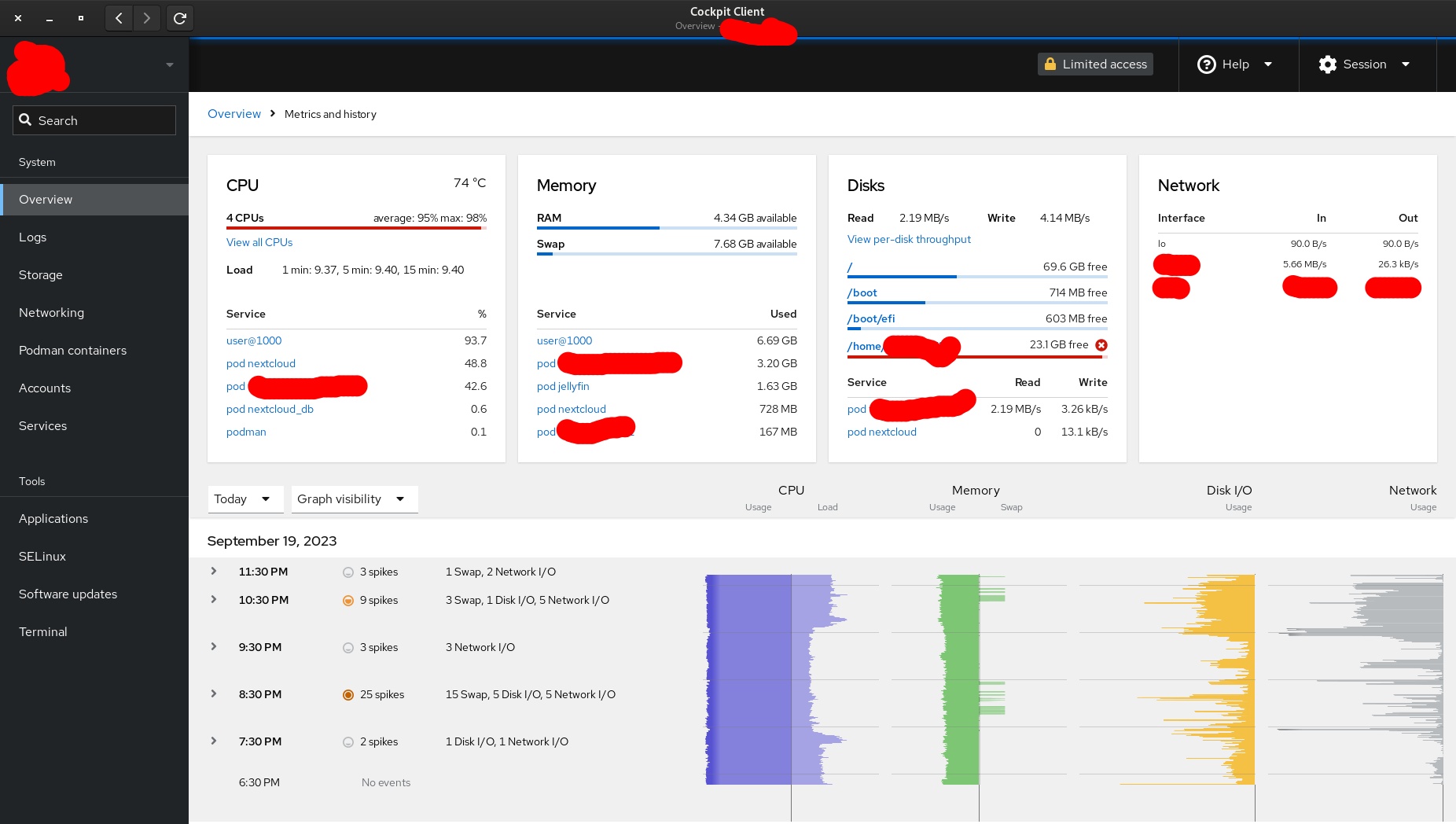Until yesterday, I didn’t even know you could use the docker images and the same docker-compose configs with Podman.
The UI you are looking at is Cockpit, which can be installed on almost any Linux Server. I have used it before but I am amazed by its integration with Podman.
Seriously, consider trying this, once.
Here’s another screenshot of Cockpit:



Judging by the screenshots, this looks very similar to Portainer. Are they basically the same tool set for different container architectures? Looks pretty interesting.
Podman replaces the underlying container engine (the docker component). Portainer is a webUI that sits on top of Docker and provides you with tools to manage it. The Podman plugin for Cockpit just happens to do the same thing.
You can actually use Portainer with Podman if you want to. It’s a little fiddly to set up, but it works.
The main advantage of Podman is that it’s rootless by default, whereas rootless Docker is still a somewhat tricky beast to set up.
This is good info, thank you for taking the time to elucidate.
Cockpit is more of a web admin panel, and happens to have Podman integration.
I think so. But portainer may have more features.
podman-composeis not officially developed by the team that develops Podman, so it is not exactly integrated within Cockpit. But portainer has all the options, including environment variables, etc. There are guides available for installing Portainer with Podman, but I am not sure how reliable it is.Cockpit is not for Podman only. We can even create and manage VMs with a display, if we install the required tools. Cockpit is a tool to manage a headless server, like storage, updates, services, etc.
@nutbutter @noride The container section is, but the rest of it is operating on the host system more like Webmin does.
Also interested in the answer to this.